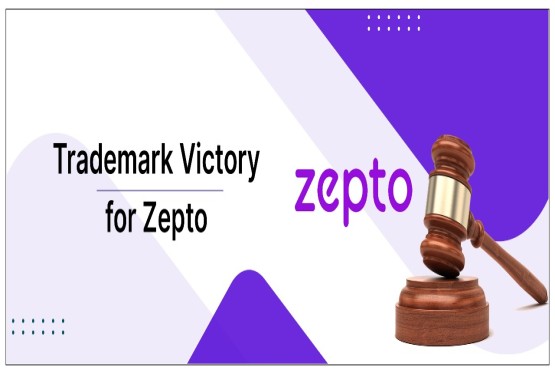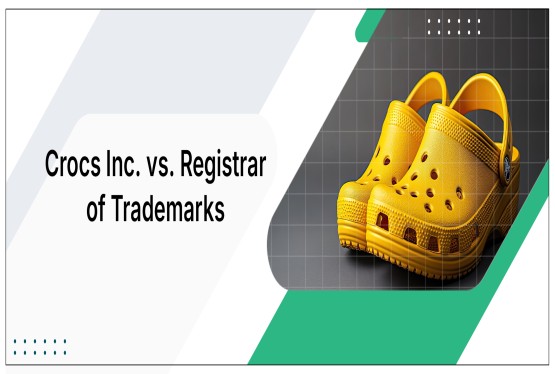A trademark protects any logo, symbol, word, or combination of words, symbols, and numbers that give a business a distinct identity. It is the most valuable intangible asset that a business has. Trademark registration process can be exhaustive and time taking it done with utmost precaution. Once registered, a trademark is valid for ten years. It can be renewed from time to time for indefinite period. Failure to which, the trademark may be removed from the Register. However, is it that straightforward to remove a registered mark from the Register? Or more importantly can a registered trademark be removed from the register? Well, there are circumstances under which a registered trademark can be removed. This process, known as trademark removal, is one of the important aspects of trademark law that ensures the integrity and fairness of the trademark system.
In this article, we will discuss what it means for a trademark to be removed, the conditions due to which a trademark may be removed from the Register, and how to avoid such a situation.
What is Trademark Removal?
Trademark removal occurs when a registered trademark is removed from the official Register, effectively taking away its legal protection. This can happen for various reasons, and trademark owners and opponents must understand the grounds on which a trademark may be removed from the Register.
Grounds for Trademark Removal
-
One of the primary grounds for trademark removal is non-use. If a trademark owner registers a mark without any genuine intention of using it in commerce, or if they fail to use the mark for an extended period, the trademark may be removed. This provision prevents individuals or businesses from hoarding trademarks without actually putting them to use.
-
If the trademark is not used in connection with the goods or services for which it was registered.
-
If the mark was registered without any bona fide intention or good faith. This could include cases where the trademark was obtained through fraud, misrepresentation, or if it closely resembles an existing trademark, causing confusion among consumers.
-
Trademarks can also be removed if they violate certain legal provisions or if they are likely to cause confusion in the market. This might occur if a trademark becomes generic over time, losing its distinctive character, or if it conflicts with public policy or morality.
-
Where the trademark could not be utilized due to legal restrictions or prohibitions on the sale or provision of services related to the trademark, the mark may still be liable for cancellation.
-
Errors, omissions, or outdated information in the register can lead to the removal of a trademark. That is why it is important to update the Trademark Registry about any changes made in respect to the trademark.
-
The registration of a trademark is valid for a period of ten years (10 years) from the date of application. Failure to renew the trademark can result in trademark removal from the Register, and the trademark proprietor’s right to sue for trademark infringement is also abolished.
The removal of a trademark can be avoided by taking following measures:-
-
Ensuring to use the mark for goods or services for which it is registered and not otherwise. Using the mark for unrelated goods or services that are outside the scope of the trademark registration can lead to trademark removal.
-
Renewal of trademarks on time: Trademarks need to be renewed every 10 years to maintain their legal protection. Ensuring that trademark renewals are filed before the expiration date is important to prevent the trademark from being removed from the Register.
-
Non-use of the trademark for more than five years: Trademarks can be subject to removal if the owner fails to use the mark in commerce for a continuous period of five years or more. It is advisable to maintain active use of the trademark in the course of business to prevent it from being deemed abandoned, and thus removed.
-
Avoiding actions that could adversely impact the distinctive characteristics of the trademark: The trademark's distinctive character, which sets it apart from other marks, must be maintained over time. Any changes or modifications to the trademark that could dilute or diminish its distinctiveness should be avoided, as this could lead to the loss of trademark protection.
-
It is also advised to update the Trademark Registry about any changes or alterations made in respect of the registered trademark. It can be a minute error or a substantial modification, updating the Registry about such changes is quite important to avoid situations like trademark removal.
The trademark proprietor must remember that maintaining the mark's protection is important even after it has been registered. This involves ensuring that the owner is not using the mark for goods or services for which it has not been registered, as well as ensuring that the mark does not infringe on any other existing trademark. One should be vigilant about any minor changes or substantial alterations to their mark, and submit the necessary applications to the Trademark Registry. And last but not least, it is advised that the owner files timely renewal applications. Therefore, it is highly recommended that the trademark proprietor seeks professional assistance to ensure proper management and protection of their registered trademark.
At Compliance Calendar LLP, we understand the importance of protecting your trademark registration. However, there are circumstances under which a registered trademark may be removed from the registered. Our team of experienced Trademark Attorneys and IP Experts is dedicated to guiding you through every step of the trademark removal process, if required. We focus on ensuring timely renewal of your trademark registrations and advising you on the appropriate scope of goods and services covered, to avoid the need for new registrations. We can help maintain the validity of your registrations and address any non-use issues that could lead to removal of your trademark from the Register.
Frequently Asked Questions
-
Can a registered trademark be removed from the register?
Yes, a registered trademark can be removed from the official trademark register under certain circumstances.
- What is registered trademark?
Registered trademarks are legally protected symbols, words, phrases, designs, or combinations thereof that distinguish a company's goods or services from those of other businesses. Although there is no mandate to get a trademark registered, but a registered trademark is granted legal protection, giving the owner exclusive rights to use the mark in connection with their specific goods or services.
- What are the grounds for removing a registered trademark?
The primary grounds for removing a registered trademark include non-use, improper registration, the mark becoming generic, legal restrictions, and failure to renew the registration.
- How long can a trademark remain unused before it can be removed?
Generally, if a trademark owner fails to use the mark in commerce for a continuous period of five years or more, the trademark may become vulnerable to removal due to non-use.
- What happens if a trademark registration is not renewed on time?
Failure to renew a trademark registration before the expiration of the 10-year term can result in the mark being removed from the register, and the trademark owner losing the right to sue for infringement. Trademark renewal can be filed either one year or six months before the expiry date, or even up to six months after the expiry date (grace period), with certain conditions and fees applicable in each case.
- Who can initiate the process to remove a registered trademark?
Both the trademark owner and any interested third party can initiate the process to remove a registered trademark from the register. Third parties may include competitors, consumers, or other entities that believe they are being harmed by the continued existence of the registered mark.
- Can a removed trademark be reinstated on the register?
In some cases, yes. If the grounds for removal are addressed, such as by demonstrating renewed use of the mark, the owner may be able to apply for reinstatement of the trademark registration.
- How can Compliance Calendar help?
At Compliance Calendar LLP, we understand the importance of protecting your valuable trademark registration. However, there are circumstances under which a registered trademark may be removed from the register. Our team of experienced Trademark Attorneys and IP Experts is dedicated to guiding you through every step of the trademark removal process, if required. We focus on ensuring timely renewal of your trademark registrations and advising you on the appropriate scope of goods and services covered, to avoid the need for new registrations. By closely monitoring the use of your registered trademarks, we can help maintain the validity of your registrations and address any non-use issues that could lead to potential removal.
For any concerns about the possibility of removal of your registered trademark, please contact us at info@ccoffice.in or connect at 9988424211.






























_(b)_of_the_Trademark_Act,_1999_(1)_crop10_thumb.jpg)



_crop10_thumb.jpg)




























_crop10_thumb.jpg)
_crop10_thumb.jpg)






_crop10_thumb.jpg)








_crop10_thumb.jpg)
_crop10_thumb.jpg)



_crop10_thumb.jpg)





























_crop10_thumb.jpg)
















_crop10_thumb.jpg)






_crop10_thumb.jpg)












































































































































_crop10_thumb.jpg)




































_crop10_thumb.jpg)












_crop10_thumb.jpg)






















